Plantar fasciitis is the most common cause of heel pain. It is derived from 2 words-
PLANTAR (bottom of foot)
FASCIA ( fibrous tissue that connects your heel bone to toes)
When this tissue, which creates the arch of the foot becomes swollen or inflamed, it is called Plantar Fasciitis. Also known as Jogger’s heel. It is quite a common condition and affects approximately 1 out of every 8 people in their lifetime. Athletes, joggers, dancers and people who use their legs strenuously are more likely to suffer from this condition. It seems to appear for no apparent reason.
The plantar fascia acts as a shock absorber when you walk, run or stand. Its ligaments undergo a lot of wear and tear when you perform your ADLs (activities of daily living). These repetitive stretchings and tearings can cause the fascia to become irritated or inflamed and lead to overuse injury called Plantar Fasciitis. Let’s see some common conditions that are responsible for it.
ALSO READ: Prevent And Treat TENNIS ELBOW At Home.
CAUSES OF Plantar Fasciitis
- Being OVERWEIGHT or obese increases pressure on Plantar fascia ligaments. Pregnant women often experience bouts of plantar fasciitis, particularly during late pregnancy.
- Foot problems like FLAT FEET, HIGH ARCH etc. are responsible for its development.
- Wearing old, worn-out running shoes or shoes with soft soles and poor arch support can result in Plantar fasciitis.
- Walking, standing for long periods or running long distances, downhill or on uneven surfaces, especially on hard surfaces.
- Having tight hamstrings, Achilles tendon or calf muscles.
- Your abnormal pattern of walking like if your feet roll inward too much while walking, can put added stress on the plantar fascia.
- ADVANCED AGE and degenerative bone conditions are very closely associated with this problem. Most cases are reported in people between 40 to 60 years of age.
ALSO READ: Best And Easy Exercises For FROZEN SHOULDER.
SYMPTOMS
Pain and stiffness in the bottom of the heel. Tenderness can also be seen. Pain is usually worse in the morning and gradually subsides as you resume your activities. Generally, pain is not felt during the activity but rather just after stopping.
My husband had experienced this pain of Plantar Fasciitis long back ago. He used to feel a lot of pain in his heel and it was very difficult for him to take the first few steps out of bed in the morning. He drives a long distance to work daily. Pain in feet from driving is a very common condition, especially as you rock your foot back and forth to apply the clutch or brake. Many of you must be facing the same problem. This pain can get worse when you get stuck in traffic as you might be holding your foot in a set position for longer. But my husband managed to come out of it as he seriously followed the treatment that I am going to share with you all.
ALSO READ: Signs And Symptoms Of Osteoarthritis.
TREATMENT
Most cases of Plantar Fasciitis resolve with time with conservative treatment.
REST
Initially, staying off your feet is highly recommended. Activity modification should be done for more active individuals and for those whose jobs require standing.
ICING
The first line treatment is to apply ice via ice massage ice bath or ice pack. It should be done after completing exercise, stretching, strengthening and after a day’s work.
PAIN RELIEVERS
Over-the-counter medicines like ibuprofen and naproxen may ease the pain and inflammation.
STRETCHING
Taut muscles in your feet and calves aggravate Plantar fasciitis or heel pain. Good stretching is required to heal it.
DYNAMIC STRETCHING
- Roll a frozen water bottle under the arch of your foot.
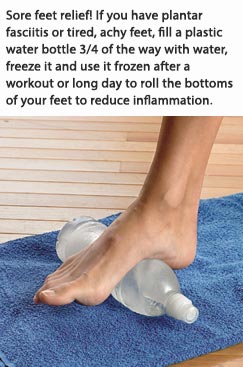
- Freeze a golf ball and roll it back and forth under the foot covering the entire area, putting gentle pressure on each spot. I recommend this as I have tried and tested this formula to cure my husband’s heel pain.
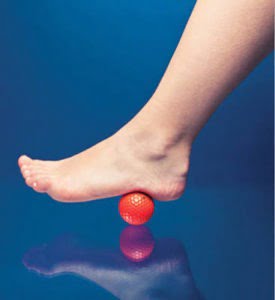
TOE STRETCH: This will stretch your Plantar Fascia.
- Prop your toes against a wall, keeping your arch and heel flat so that your toes stretch. Hold it for 20 seconds and repeat it 10 times, twice a day.
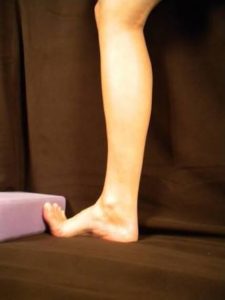
- While sitting, cross the affected leg over the other leg, grasp your foot and gently pull your toes with the other hand towards your shin until you feel a stretch in the arch of your foot. Better to do this stretch before getting out of bed. You can also try stretching by drawing the alphabet with your toes.
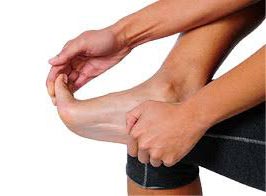
TOWEL STRETCH
Place a rolled towel under the ball of your foot, holding the towel at both ends. Gently pull the towel towards you while keeping your knee straight. Hold this position for 15-30 seconds. Repeat 3-4 times.
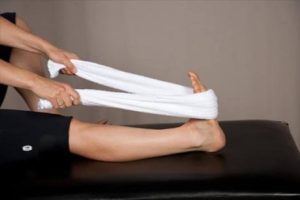
STAIR STRETCH
Stand with the balls of your feet on 1st stairs and let your heels drop down until the back of your leg and Achilles tendon are stretched as much as is not uncomfortable. You can take a support of railing.
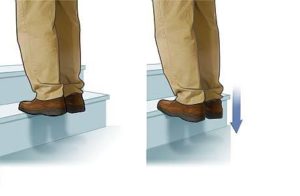
WALL STRETCH
Stand facing a wall, an arm’s length away. Place your affected foot behind the other one. Make sure your toes are facing forward. Lean forward and rest your hands on the wall. Bend the front knee, keep the back knee straight and the heel firmly planted on the floor. Hold this position for 15-30 seconds and then relax. Repeat it 10 times twice a day. It is important to keep the knee fully extended on the side being stretched.
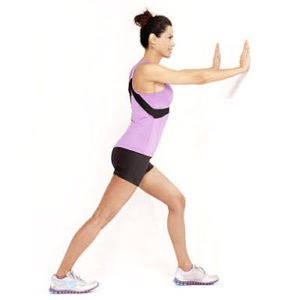
Any activity that stretches the calf muscle will also stretch the plantar fascia.
Make stretching a part of your daily activity, twice a day, throughout life, as is brushing your teeth. It takes a few moments and will pay off in the long run.
ALSO READ: Benefits Of Pre And Post-Workout Stretchings.
STRENGTHENING
TOWEL CURL
Sit with the affected foot flat on the end of a towel placed on a smooth surface. Keeping the heel on the floor, the towel is pulled towards the body by curling the towel with the toes.
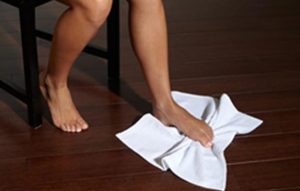
TOE TAPS
All the toes are lifted off the floor. Keeping the heel on the floor and the outside four toes in the air, the big toe is tapped to the floor repetitively. Next, the process is reversed. The outside 4 toes are repetitively tapped to the floor while keeping the big toe in the air.
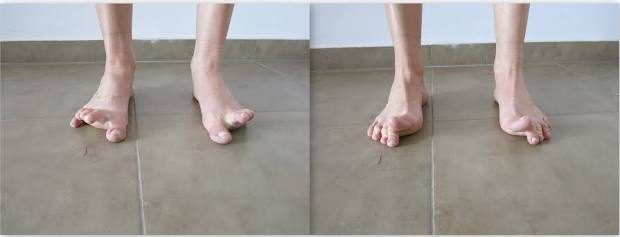
MARBLE OR COIN PICK-UPS
Place a few marbles on the floor near a cup, pick them up with the toes and drop them in the cup while keeping the heel on the floor.
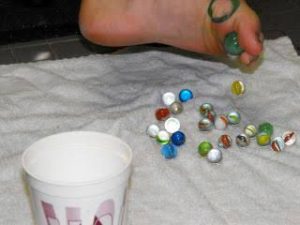
All these will focus on the intrinsic muscles of the foot.
Must do exercises to cure Plantar Fasciitis (Heel Pain), Before getting out of bed
NIGHT SPLINT
Your Physiotherapist may suggest you splint that stretches the calf and arch of your foot while you sleep.
It is usually designed to keep a person’s ankle in a neutral position.
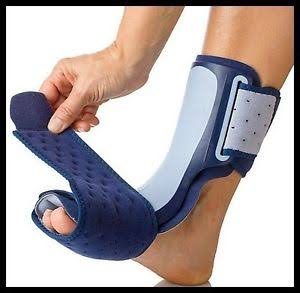
ORTHOTICS
A doctor may prescribe you off-the-shelf heel cups, cushions or custom-fitted arch support. All this will help in distributing the pressure to your feet more evenly and decrease the tension on plantar fascia.
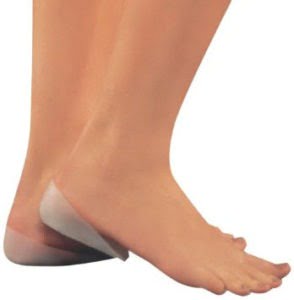
STEROID SHOTS
Steroid injections can give temporary relief. But too much of this is not recommended as it can weaken or even rupture your plantar fascia.
EXTRACORPOREAL SHOCK WAVE THERAPY
Sound waves are directed into the tender area of the heel. It is usually used in cases of chronic conditions.
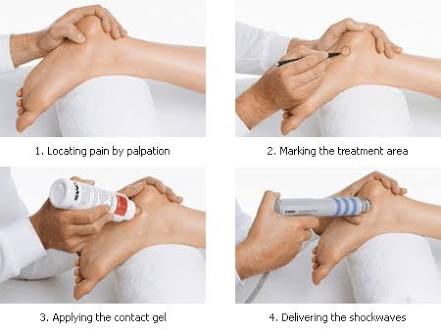
SURGERY
Surgical release of Plantar Fascia may be recommended when all other treatments fail. In this, plantar fascia is detached from the heel bone. It can weaken the arch in your foot. So surgical intervention should always be a last resort.
Treatment options vary from person to person and can be tailored according to an individual’s risk factors and preferences. If you don’t treat Plantar fasciitis, it may become a chronic condition as you are more likely to develop the symptoms of foot, knee, hip and back problems because Plantar Fasciitis can change the way you walk.
“TAKE CARE OF YOUR BODY,
IT’S THE ONLY PLACE YOU HAVE TO LIVE.”
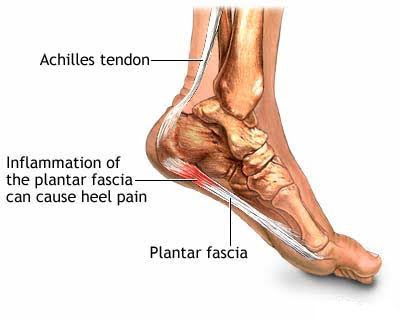
Dr. Seema,
Thanks for such a valuable and useful tips. Am sure that this will help me overcoming from the similar problem I am having for long..
It would be great if you could send someone to give demo of all these exercises…;-)
Thanks one again..and pls keep posting such articles with such useful information.
Best Regards,
Vikas Arora
9818473797
Sorry Mr.Vikas, we don’t provide such facilities but Thanks a lot for your consideration. I appreciate it 🙂
Dear Dr. Seema,
Glad you have posted this article. My husband is facing the same problem as his work involves a lot of travelling. He do jogging for 1 hour everyday but if he skips his jogging routine for 2 days, the aggravate.
We will try these excercise which can br done at home after long hectic working hours and driving.
Love
Ekta
These exercises ease the pain when done in the morning before getting out of the bed. Try them and let me know the results !!